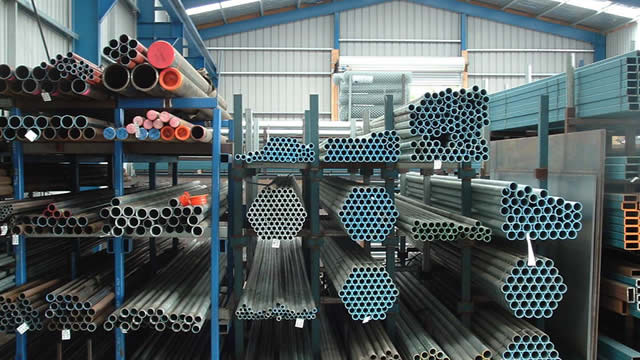Worthington Steel’s Stock Slump: A Temporary Setback or a Long-Term Opportunity?
Worthington Steel, a leading steel producer, has recently experienced a significant setback in its stock performance. Over the past few months, the company’s shares have dropped by approximately 18%, leaving many investors wondering if this is a sign of things to come or an opportunity to buy at a discounted price. Let’s delve deeper into the reasons behind Worthington Steel’s stock slump and assess the potential implications for individual investors and the global economy.
Economic Concerns and Weak Fundamentals
One of the primary causes of Worthington Steel’s stock decline is the economic uncertainty that has been plaguing the market. The ongoing trade disputes, interest rate hikes, and geopolitical tensions have all contributed to a volatile investment environment. Furthermore, Worthington Steel’s Q3 2025 financial report revealed a 14.7% year-over-year decline in revenue, which can be attributed to a 10.6% decrease in volume and lower pricing.
Impact on Individual Investors
For individual investors, Worthington Steel’s stock slump may present an intriguing opportunity to buy at a discounted price. Long-term investors, in particular, may find the company’s current valuation attractive. According to some financial analysts, Worthington Steel’s stock is currently undervalued, with a price-to-earnings ratio lower than the industry average. However, it is essential to remember that investing always comes with risks, and it is crucial to conduct thorough research before making any investment decisions.
Effect on the Global Economy
The decline in Worthington Steel’s stock value is not just an isolated event; it is a reflection of the broader economic trends that are affecting the global steel industry. Tariffs, especially those related to the automotive sector, pose significant risks to steel producers. However, Worthington Steel’s localized sales strategy, which focuses on selling steel directly to customers in their region, helps mitigate some of these impacts. This strategy allows the company to reduce its reliance on exports and focus on serving the domestic market, which can help insulate it from external economic shocks.
Additional Perspectives
To gain a more comprehensive understanding of Worthington Steel’s stock slump and its potential implications, it is essential to consider various perspectives. According to a recent report by Goldman Sachs, the steel industry is expected to face continued headwinds due to weak demand and oversupply. However, other analysts, such as those at J.P. Morgan, remain optimistic about the sector’s long-term prospects, citing improving global economic conditions and increasing infrastructure spending.
Conclusion
In conclusion, Worthington Steel’s stock slump is a complex issue that requires careful consideration from both an individual investor and a global economic perspective. While the company’s current financial performance may be disappointing, its long-term prospects remain uncertain. By staying informed about the latest industry trends and conducting thorough research, investors can make informed decisions about whether to buy, sell, or hold Worthington Steel stock.
- Economic uncertainty and weak fundamentals are contributing factors to Worthington Steel’s stock decline.
- Individual investors may find the company’s current valuation attractive, but there are risks involved.
- Worthington Steel’s localized sales strategy helps mitigate some of the risks posed by tariffs and global economic instability.
- The steel industry as a whole is facing challenges, but some analysts remain optimistic about its long-term prospects.
- It is essential for investors to stay informed and conduct thorough research before making any investment decisions.





